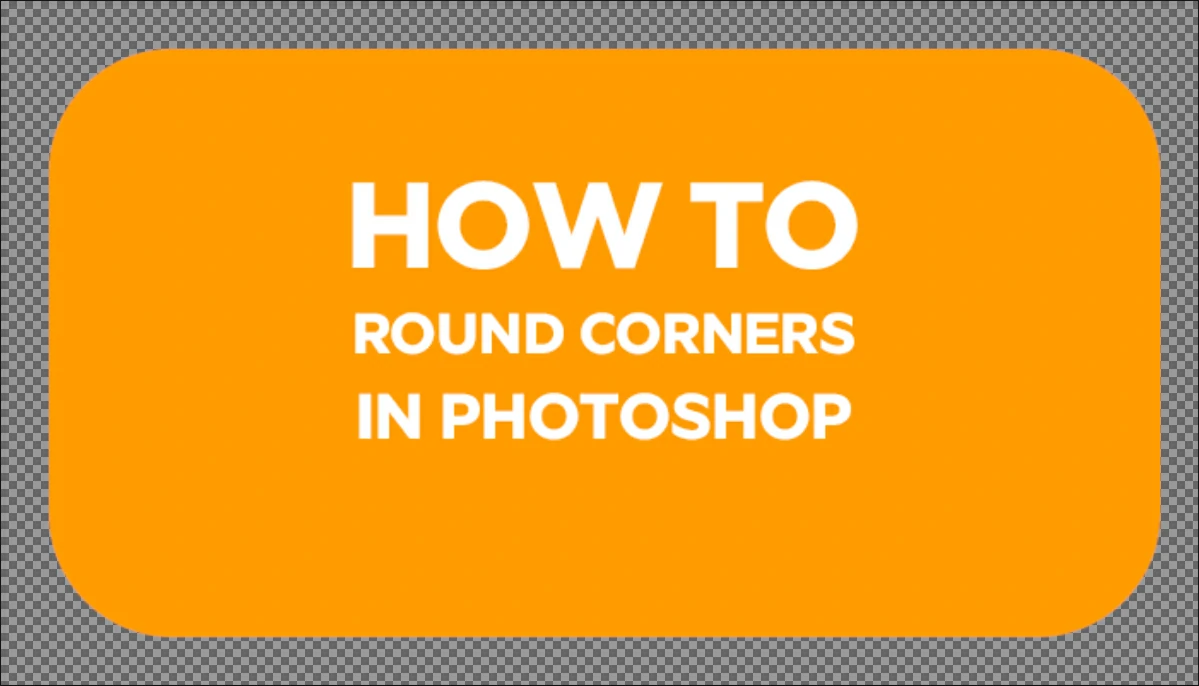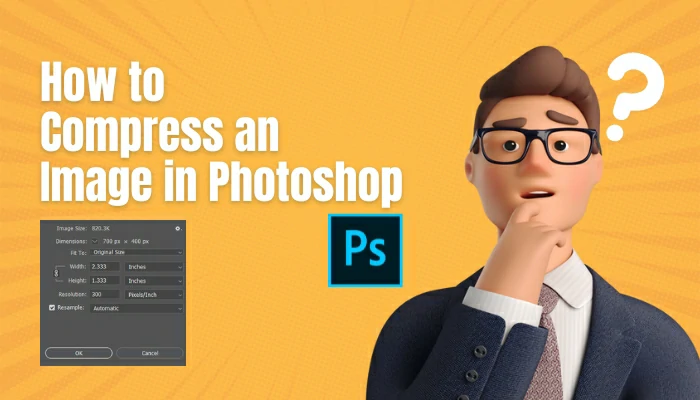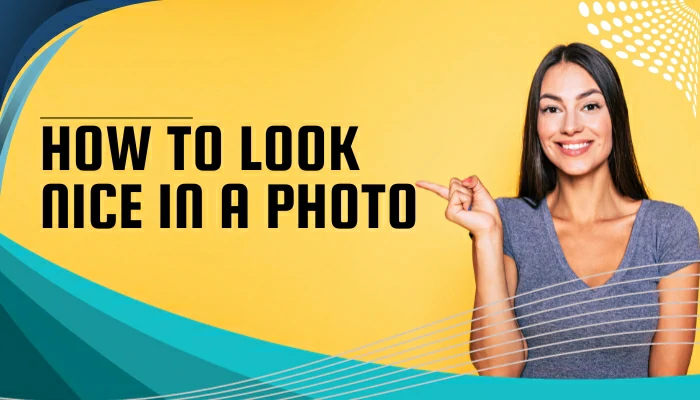How to enhance a reflection in a photo

How to enhance a reflection in a photo? You must read the article attentively below to know the answer to this question.
Reflection is a visual element that can add interest to a photograph. We have all encountered reflections on glass or water that have captured our attention. Their presence serves as a reminder of the fleeting nature of light in our environment, similar to the fleeting nature of a rainbow.
If you have a camera and want to take pictures of reflections, it can be intimidating if you haven’t done it before. In this article, I will write about what reflection photography is and how to enhance a reflection in a photo.
What Is Reflection Photography?
Contents
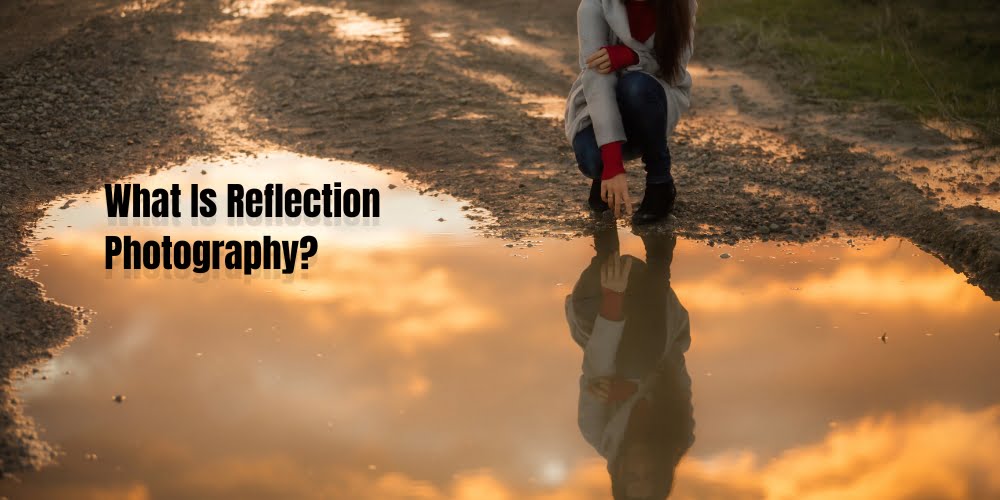
Reflection photography, also called mirror photography, is all about taking an image with a mirror-like surface reflecting the surrounding environment. It doesn’t matter if it’s a huge body of water like the ocean or a tiny raindrop; you can make magic if there’s a reflective surface. Even though we mentioned water as an example, anything reflective will work.
So, if you want to get into reflection photography, you can start with a mirror, tile, or window. This type of photography allows you to use your subject’s shadow, shape, or mirror to create an image. Whether you’re shooting on a lake or in town, where, when, and how you take your photos are all important for creating a beautiful landscape or a stunning close-up.
How to enhance a reflection in a photo

Photographers strive to capture the “perfect” reflection. Not only does a good reflection enhance the subject, but it also adds a sense of grandeur to the image. Unfortunately, the ideal reflection is difficult to achieve. The likelihood of achieving one depends on various elements, including the weather, the size of the crowd, and any obstructions in the reflection.
Anyway, you can also enhance the reflection in a photo by editing. Reflection in a photo can be enhanced in post-processing. To know the process of how to enhance a reflection in a photo, you have to check out the steps given below.
First Step: Copy the source of reflection.
You must first create a copy of the source of the reflection to improve it.
Second Step: Create a selection and make a copy.
To select a portion of the scene, draw a rectangle around it using the Rectangular Marquee tool. This normally ends at the horizon, where the scene becomes the reflection. Use the keyboard shortcuts Cmd/Ctrl+C and Cmd/Ctrl+V to copy and paste the selection.
Third Step: Flip the reflection vertically.
Use Cmd/Ctrl+T to convert the newly created layer while it is still selected. Insert your cursor into the image, then choose Flip Vertical from the context menu. Move it below the current reflection using the Move Tool. Lower the layer’s opacity to check if the reflection layer matches the layer underneath. If alignment is required, do not worry about getting it perfect.
Final Step: Change blend mode and mask out unwanted areas.
Make the reflection layer’s blend mode Soft Light at this point. The reflection should now be more obvious, as you can see. If you don’t want the reflection to appear in some places, add a layer mask and remove those regions with a black brush.
Mirror photography ideas:
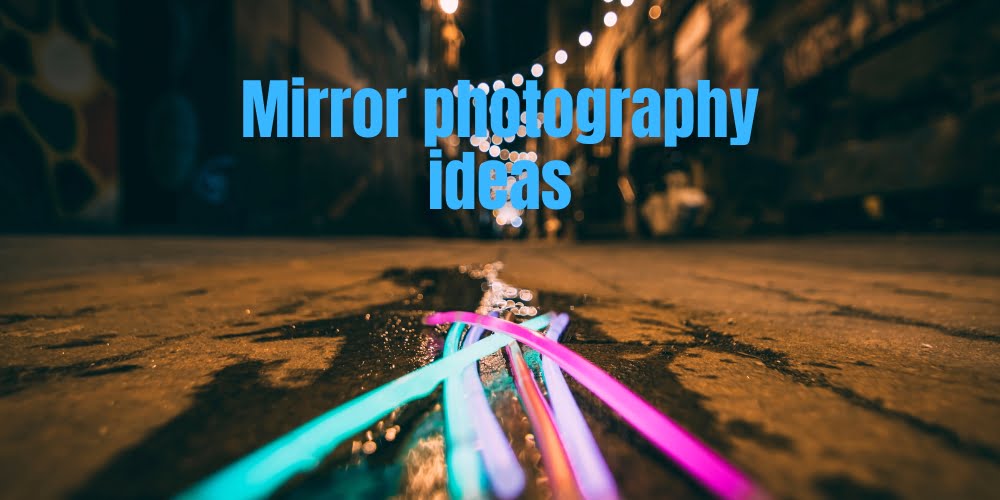
By absorbing light from their environment, Mirrors can be used to create virtual objects for your photographs. However, the extent to which they can be fully utilized will depend on your creative imagination. Below are the three most unique mirror photography ideas for you.
- Trans-Flection:
Framing an object in dark clothing on the other side of a window pane is a great way to achieve an image that combines transmission and reflection. To do this, one subject should be framed, and a spotlight should illuminate the subject. The window pane should be angled in a way that allows the main subject to be reflected on the surface of the glass.
- Multiple reflections:
Mirror portrait photography is a great way to get a “cloned” effect on your photos. It’s a great way to show your model from different angles and grab the viewer’s attention. It’s important to set the mirror correctly and pick the right angle to get the perfect shot. Sometimes you’ll need to take multiple photos simultaneously to get multiple reflections.
- Vintage:
Mirror photography in a vintage style is still popular and can be used for more than just mystical photography. Such photographs provide an opportunity to explore the composition and colouration of the frame. Photographers prefer large table mirrors with relief frames. These types of mirror image photography can be complemented with sophisticated jewellery, floral arrangements, and books. Additionally, a unified colour scheme is often desired. Some photographers prefer a concept based on contrasts.
The reflection in the water:
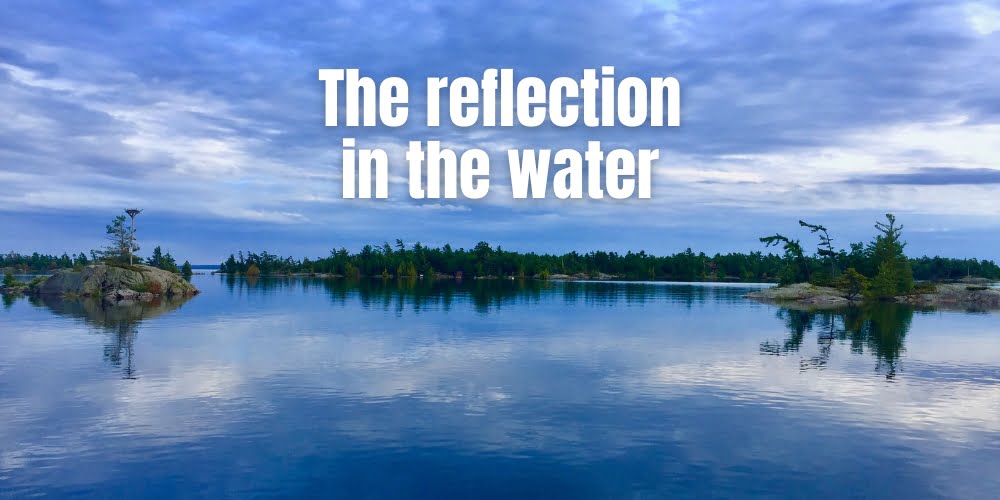
Water reflections are the most common type of reflection we see daily. We’ve all seen water reflections in lakes and puddles occasionally. Water reflections are most often photographed underwater on relatively quiet water.
Tips for water reflection:
- Select wide-angle to focus on the full reflection or telephoto to focus on the details. Wide-angle lenses allow you to capture a larger portion of the image. They are also very good for reflections because you tend to mix two motifs.
- Reduce glare and increase contrast and saturation in the reflection with a polarizing filter. Avoid unwanted light reflections and give your image more colour saturation with a polarizing filter.
- When setting up your camera, make sure you set the ISO value as low as possible to get the sharpest image possible. Aim for a small aperture of f/11 to get all the detail you want.
- It’s important to familiarize yourself with this exposure triangle to achieve optimal results. Small variations on the water surface can be eliminated by increasing the exposure time.
- To get the best image quality, also look for calm waters. However, rippled water also has a certain magic to it. In this case, the reflection in the water becomes blurry.
- Try shooting from high and low angles, and remember that golden hour usually gives you the best light.
- The camera should be aligned with the horizon. Most cameras come with an artificial horizon display, making the alignment simple and the reflection straight.
Frequently Asked Questions (FAQ):
Que: When will the reflections on the water be best?
Ans: The three most significant elements to consider when reflecting on water are the weather, the time of day, and the current. As is often the case in photography, the best times to photograph reflections in water are dawn and dusk. The warm rays of the sun create a tranquil atmosphere. Additionally, the early morning or evening is typically more windless. As a smooth surface with minimal movement produces the most vivid and detailed reflections, select a body of water standing and ensure the wind is not blowing. Ponds or small lakes are ideal for this purpose.
Que: What are the best camera settings for reflections?
Ans: To get the best out of your water reflection photos, you should aim for a quick shutter speed and a narrow aperture (usually f/8 to f/22). These settings are perfect for getting as much detail from your reflection as possible.
Que: What gives the most accurate reflection?
Ans: Mirrors are generally regarded as more reliable in terms of accuracy than photographs or videos because they reflect light in a manner that is more similar to how we perceive reality.
Que: What lens to use for reflections?
Ans: While any lens can technically be used for reflection photography, a wide-angle camera will provide you with the widest possible field of view without compromising quality.
Conclusion:
Hopefully, you have learned how to enhance a reflection in a photo after reading this article above. Reflection is what gives a photo its unique character. It opens up a new plane of view and captivates the viewer. Reflection can blur reality and create captivating images. Reflection provides an opportunity to create one-of-a-kind and awe-inspiring images.
A reflective surface can create a more captivating shot, photograph a beautiful living environment, or explore the possibilities of abstract art photography by varying angles and lighting. The possibilities of reflected photography are limitless; the joy lies in the range of possibilities. Now it is your turn to get creative! Practice and find out more ideas on how to enhance a reflection in a photo.
